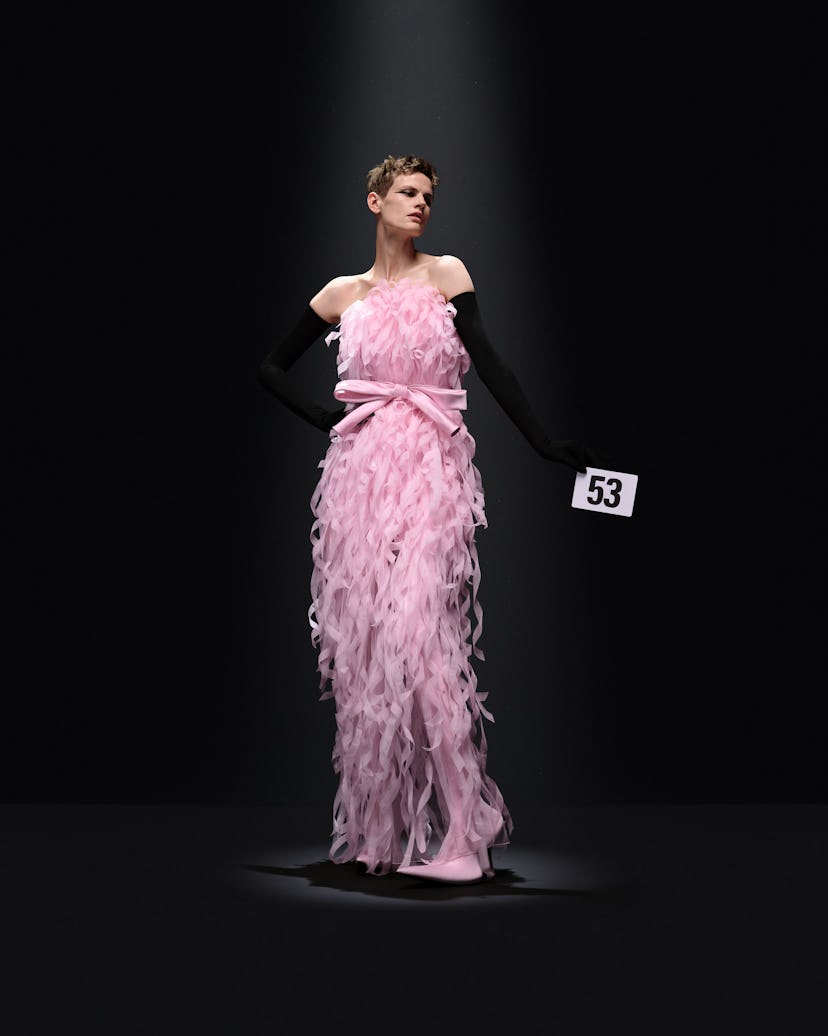Balenciaga Makes Its Couture Comeback

A slow-moving Eliza Douglas in a silver armor dress closed Balenciaga’s 52nd couture presentation at the fashion house’s Parisian salon. Perhaps the look was meant to be a symbol for a modern-day Joan of Arc, or maybe it was simply an exercise in dazzling displays of craft. Either way, creative director Demna managed to capture attention for his clothing rather than mud pit runways or celeb-model cameos. The final dress was CAD-designed, 3D-printed in galvanized resin, and polished in chrome, with a coating of black flocking along the interior to resemble a jewelry box.
This is the third couture collection under Demna for Balenciaga—it’s also the first couture show since last year’s scandal. This time around, Demna proved his attention to shape is his greatest asset. Take, for example, the bustier dress composed of 10,000 crystals. In the latest collection, Demna expanded on techniques he’s tried before, with elements of everyday outerwear—cotton trench coats, jeans, cashmere scarves—all cut to appear as though they were blowing in the wind. (The technique required two full days of hand-sculpting, and it involved a knitted, bonded liner that reinforced the external fabric.)
Cardi B sat front row in a coat that served as a cocoon of ruffled white fabric with a black sequined bodysuit underneath. The rest of the audience mirrored Demna’s signature aesthetic, in a mostly black palette with oversize, bug-eyed sunglasses.
Is couture still relevant today? It depends on who you ask. It’s been reported that there are anywhere from 1,000 to fewer than 100 true couture clients—but from the start, Demna has tried to instill the idea of extreme wearability into his couture collections for Balenciaga. Case in point: the faux jeans that were actually trousers.
In many ways, it felt like Demna was going back to his roots. There was a playful dance between textile and trope l’oeil here, as well as reimagined fabrics—something that felt specific to the Vetements era of his career. Padded coats looked like fur, trousers resembled jeans or leather pants. Houndstooth and python textures are replicated, along with buttons and lapels on blazers. To get the effect, oil paint brushstrokes were added to the fabrics.
There was also a deep play on archival references, such as the look that opened the show: an interpretation of an original Cristóbal Balenciaga design, modeled by Danielle Slavik (the label’s house model from 1964-1968). The original was a personal favorite of both Slavik’s and Grace Kelly’s. The connected pearl necklace and little gloves were new additions.
The show notes explained the collection as a “tribute to pursuing perfection. While true perfection is impossible, it is always in the mind of the couturier.” The answer of what’s next for Balenciaga and Denma may still be outstanding, but this collection showed a kind of craft that felt uniquely personal in the couture scene—where things can become redundant.